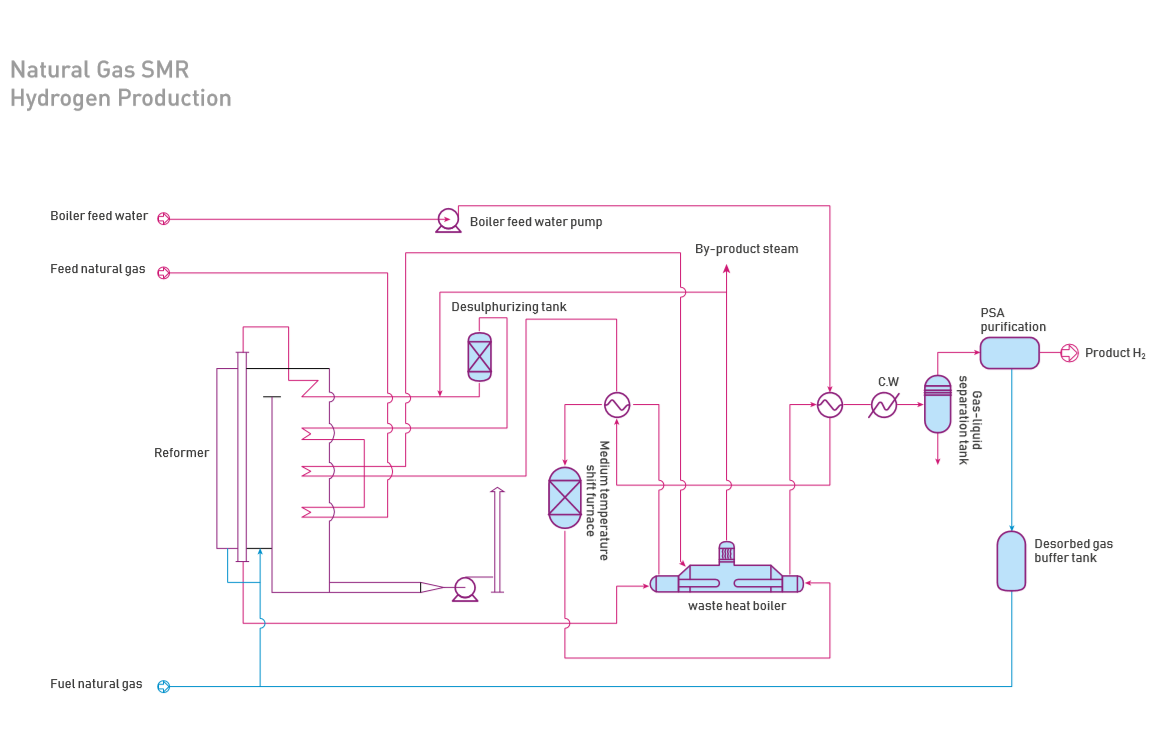PORT ARTHUR, Tex. — A half-hour’s drive from where the modern oil and gas industry was born, a new power plant provides a glimpse into one possible future for fossil fuels.
In this Texas region called the Golden Triangle — named for the riches produced a century ago from the first modern oil field — the electricity producer Entergy is building what it calls the most advanced power station in its fleet. The $1.5 billion project comes with added capability: In addition to burning gas, its turbines can also run on hydrogen, a fuel that burns with no greenhouse gas emissions. Natural Gas hydrogen plant

Technology such as this would probably become an imperative for many energy companies under historic power plant rules the Biden administration is expected to unveil this month. Those regulations, if they survive near-certain legal challenges, will play a critical role in the United States meeting its promises to cut carbon emissions.
“This is a way to keep growing gas, but make it cleaner over time,” said Steve Fleishman, a utility analyst with Wolfe Research. To reduce emissions but keep the power grid reliable, he added, “the system cannot rely just on adding renewables.”
Yet the Entergy plant also underscores the technological and political challenges that U.S. electricity generation faces as it transforms. Hydrogen power and other technologies — such as those that allow companies to capture carbon emissions and store them rather than releasing them into the atmosphere — are still far from proven solutions for large-scale deployment.
And even as Texas and other Republican-leaning states produce huge amounts of carbon-free electricity, lawmakers in those places and in Washington are often hostile to clean energy. Just last week, as part of legislation to lift the federal debt limit, House Republicans passed a bill to repeal the Inflation Reduction Act, a law that devotes hundreds of billions of dollars to subsidizing such transformations.
At a recent groundbreaking for Entergy’s plant — the Orange County Advanced Power Station — executives made no mention of the politics playing out in Washington. The company’s chief executive, Drew Marsh, didn’t mention gas once during his nearly five minutes of remarks. He mentioned hydrogen nine times.
“People are talking about hydrogen hubs,” Marsh said. “Affordable, reliable and clean energy is what our customers are looking for. And with this investment, they’ll get to check all three boxes.”
As operators of fossil fuel-burning plants are pressured to eliminate or at least reduce their planet-warming emissions, Washington has come through with subsidies for carbon capture and hydrogen to help. And the latest push from the Environmental Protection Agency involves new emissions limits that are so stringent, gas- and coal-burning power plants would need carbon-capture or hydrogen technology to comply, The Washington Post and others have reported.
With roughly a dozen projects such as Entergy’s nationwide, some power companies are trying to get ahead of that push from federal regulators, Fleishman said.
Both hydrogen and carbon capture are still developing — and often controversial — technologies. The infrastructure needs for both are massive, and it may not be a viable business solution for most companies, especially outside of the Gulf Coast and a few other select geographic areas, Fleishman said.
During the Obama era, the Department of Energy spent $1.1 billion to help launch 11 carbon capture demonstration projects. Only two of them are operational today. A study by the Institute for Energy Economics and Financial Analysis found that 10 of the world’s 13 biggest capture projects are either underperforming by large margins — trapping as little as half of the carbon dioxide promised — or have shut down.
When burned, hydrogen fuel produces no greenhouse gas emissions. But the fuel can have significant climate impacts depending on how it is produced, stored and transported.
Just producing it can create greenhouse gases. Currently, the most common way of producing hydrogen is to combine large amounts of natural gas with high-temperature steam. The process is highly energy intensive and creates carbon-dioxide emissions — unless it is paired with a carbon-capture system to control them.
Using a different process instead, producing hydrogen with solar, wind, geothermal or even nuclear energy, can avoid those emissions. But many environmental groups say that is a much riskier and less efficient use of that zero-carbon energy than just sending power from those sources onto the grid.
“If clean hydrogen is going to play a niche role in the power sector, then that hydrogen must have very low greenhouse gas emissions at every stage of its production, no matter how it’s produced,” said Emily Kent, the U.S. director of zero-carbon fuels at the Clean Air Task Force, an environmental organization.
If hydrogen is not properly stored and transported, it could also leak into the atmosphere, adding to the greenhouse effect. The Environmental Defense Fund and other groups say there is little data indicating whether the industry has a properly leak-proofed system.
“We currently do not have a very clean system for moving natural gas, and hydrogen is going to be even harder,” said Steven Hamburg, the fund’s senior vice president and chief scientist. “It’s still going to help us in the long term, without a doubt. So hydrogen has a role to play, but we have to get it right.”
But there are also signs that hydrogen and carbon capture technologies are becoming more viable. Their advocates often point to the Petra Nova project southwest of Houston, which used a system that captured more than 90 percent of the carbon dioxide from its flue gas — although that success was tempered by extensive outages, according to the Energy Department’s 2020 conclusions about the project.
The energy industry has changed dramatically since the Obama administration first targeted power-sector emissions through its Clean Power Plan nearly a decade ago.
In 2014, coal was the country’s top source of electric power, and the industry was the country’s top source of emissions, responsible for nearly a third of the nationwide total. Since, electric power has dropped to No. 2, with emissions down 20 percent, according to EPA data, as power companies closed waves of old coal-fired plants and replaced them almost exclusively with wind, solar and new, more efficient gas-burning units.
Despite that change, the grid is still reliant on fossil fuels, and its plants often support union members and working-class voters. Gas and coal still fuel roughly 60 percent of U.S. power. Both the White House and Congress have responded by pledging billions in new spending to develop new systems — such as carbon capture — that can preserve jobs and keep the lights on.
Carbon capture typically works through a chemical process to separate carbon dioxide from industrial gases. In many existing operations, it is then compressed into a liquid and routed to storage, or repurposed for industrial uses, keeping it from entering the atmosphere and warming the planet.
Four power plants nationwide actively use carbon capture, according to a count from the Clean Air Task Force. Coal-fired plants in the U.S. have the capability to capture 3 million to 4 million tons of carbon dioxide per year, and newly announced projects are on pace to raise that number more than sevenfold by 2025, according to Bloomberg data published last month in a U.S. Energy Department report.
The first major hydrogen-fueled power plant in the United States was completed in 2021, according to S&P Global. It is one of about a dozen similar projects in development, as tracked by the nonprofit Clean Energy Group, though most are smaller and sometimes just pilot projects.
Hydrogen production done in conjunction with carbon capture is expected to soar in the coming years, according to the Energy Department report, with an expected yearly capacity of 33 million tons of carbon sequestration by 2030, up from nothing today.
Much of that momentum has come from major subsidies approved in Washington. The bipartisan infrastructure spending package of 2021 included nearly $18 billion combined for carbon capture and hydrogen.
Last year’s climate-spending package passed by Democrats, dubbed the Inflation Reduction Act, then expanded on tax credits offered for every ton of carbon captured. Electric generators and industrial companies — including hydrogen producers — can now claim as much as $85 a ton, up from $50. Hydrogen producers also have the option of instead claiming a tax credit specifically for them.
While there’s uncertainty around the new EPA rules, the climate spending law can help make these technologies competitive with gas, said Bill Newsom, chief executive of Mitsubishi Power Americas.
“The key thing is cost. If we can get hydrogen and carbon capture cost competitive, then yes, it’ll play significantly in the marketplace,” said Newsom.
Mitsubishi Power is making the two turbines for Entergy’s Orange County project, part of a model the company is selling that can burn 30 percent hydrogen along with gas without any changes — and go to 100 percent hydrogen with what Newsom said are “small modifications.” The Japanese company is also the contractor for a Utah plant that is replacing 1,800 megawatts of coal power.
Newsom said the hope is to start both projects still at 70 percent natural gas, but to go to only hydrogen eventually, pending decisions from the plant owners and regulators. The Utah site also has a production and storage facility, creating the type of hub that the company hopes will perfect the process and drive down costs.
An Entergy spokeswoman said the plant may benefit from those tax credits in the future but did not detail how. The company declined a request for interviews with executives. State regulators must still approve use of hydrogen at the plant, and consumer demand and other market conditions will determine how much of it is used, a company spokeswoman said.
The Inflation Reduction Act tax credits will be available later, once the hydrogen gets produced and used — or the carbon gets captured — but tax lawyers say companies can start borrowing off those expected credits now to finance deals and new developments. That’s part of what is feeding this surge of development, building off consumer demand for zero-emissions energy that has also been growing in recent years, attorneys and executives said.
For the Biden administration, that momentum feeds into its regulatory plans. To impose more stringent limits on emissions, the EPA must be able to justify the costs it is imposing on industry. The federal subsidies, combined with these investments and growing development, should lead to technological improvements that make compliance less expensive, advocates say.
The advancements will allow the EPA to bolster the rules it sets through the Clean Air Act, and that’ll help the country fulfill Biden’s commitment to cut nationwide emissions in half by 2030 compared with 2005 levels, White House national climate adviser Ali Zaidi said earlier this year.

Hydrogen Reformer “They’re not going to ignore the fact that there’s a transformation going on in American industry,” Zaidi said in a February speech at the Georgetown University Law Center. “We have a whole new set of tools — including through the Bipartisan Infrastructure Law and the Inflation Reduction Act — that makes our job easier. So number one is using both of those tools and using them in tandem.”
